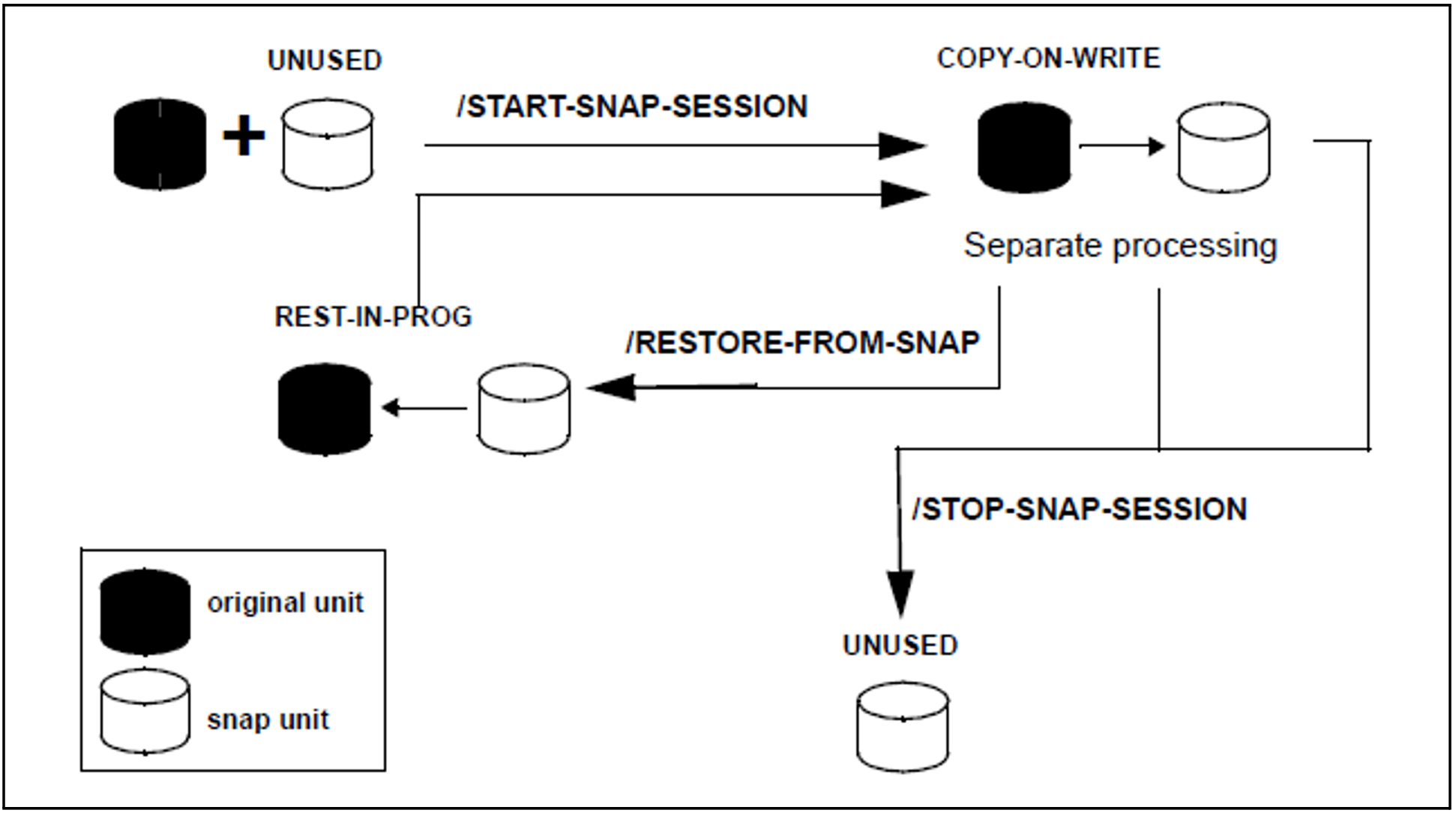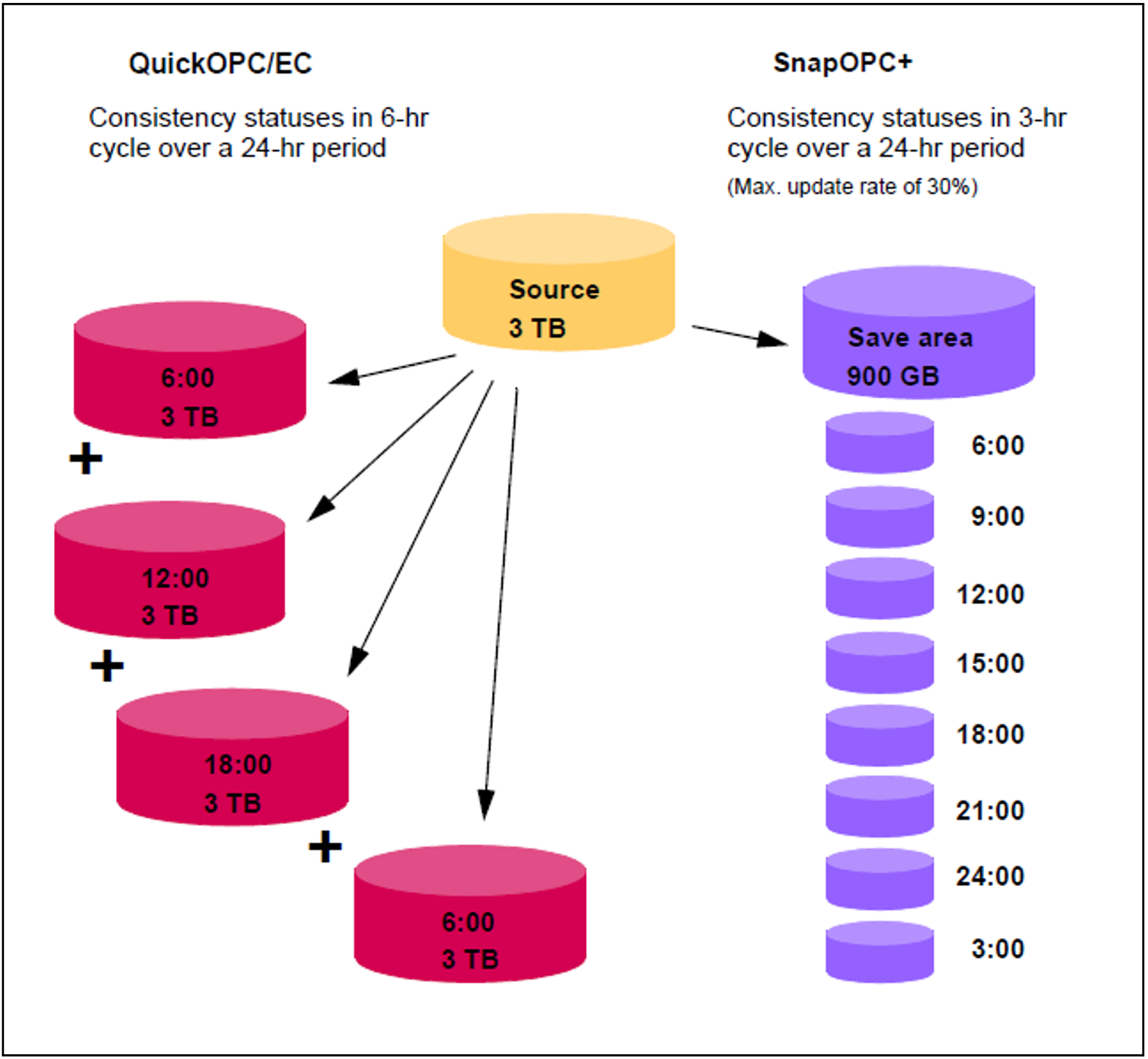This section describes the SnapOPC+ function.
SnapOPC+ is the name of the snap function for ETERNUS DX/AF with the option of creating and operating multiple snap sessions for one original unit.
Overview
SnapOPC+ creates a “snapshot” of a logical unit (or of multiple logical units). The snapshot, which is called a snap unit, is a logical copy of the original unit at a particular time (“Point-in-Time copy”): while the data on the original unit can be modified, the snap unit retains the status of the data at the time the snapshot was created.
The snapshot is available immediately after creation (and implicit activation) of the snap pair, i.e. there is no copy operation. Creation of a snap unit consequently offers extremely high performance. The original and snap units together form the snap pair. SnapOPC+ manages this in what is known as a snap session. Up to 256 snap units can exist for one original unit.
In commands the UNIT= operand always specifies the original unit. The SNAP-UNIT= operand specifies the snap unit of a snap pair.
SnapOPC+ works with the "Copy-On-First-Write strategy": only if data on the original unit is modified is the original data concerned saved beforehand in the storage system. As a result, SnapOPC+ only requires little volume capacity. Nevertheless, from the user viewpoint a complete copy of the original data is always available. This copy is split from the original, thus permitting the original and the copy to be processed separately, for example by different applications.
After separate processing of the original and snap units has been completed, the snap unit's data can be stored, discarded or reconstructed on the original units.
Only for Eternus DX S3/DX S4/AF S2:
Multiple snap sessions of an original unit are dependent on each other. They can be terminated individually, beginning with the "oldest" snap session (/STOP-SNAP-SESSION FORCE=*NO). A "younger" snap session can also be terminated, in which case all corresponding "older" snap sessions are also terminated implicitly (/STOP-SNAP-SESSION FORCE=*YES).
SHC-OSD offers the option of consistent generation of a pubset’s snap units during ongoing operation. Stopping all inputs/outputs on all the units concerned while splitting is in progress ensures data consistency.
Figure 13: SnapOPC+
Application and use
The snap units which are provided by SnapOPC+ and are immediately available supply copies of the productive application data. Data backups, batch evaluations and program tests can consequently be executed on the copies of the “live data”. The original data is available in parallel to the main application, and as a result the latter can remain productive longer.
SnapOPC+ can also be used to speed up accesses when, for example, copies are provided for the accesses of multiple applications instead of the original data.
SnapOPC+ is particularly useful when (for example in the course of a day) multiple backups or copies of productive data are to be created which require a low level of updating. In this case SnapOPC+ offers a favorable alternative to clones with their complete copies (see "Equivalent Copy (EC)") as considerably less volume capacity is required. The figure below shows a comparison of the functions.
Figure 14: Comparison of the capacity requirement for periodic consistency statuses when QuickOPC/EC and SnapOPC+ is used: Four full copies with clone units require 12 TB of additional capacity.
Up to 15 Point-In-Time copies with snap units require only 900 GB of additional capacity.
The copies generated using SnapOPC+ can be used for data backup and for creating replicas of databases.
BS2000 offers an integrated solution for creating snap copies of pubsets. This function is used for data backup and is offered under the name Snapsets. For details, see the “Introduction to System Administration” manual [5].


